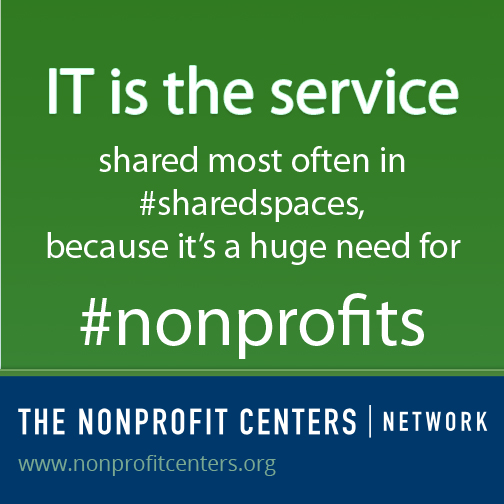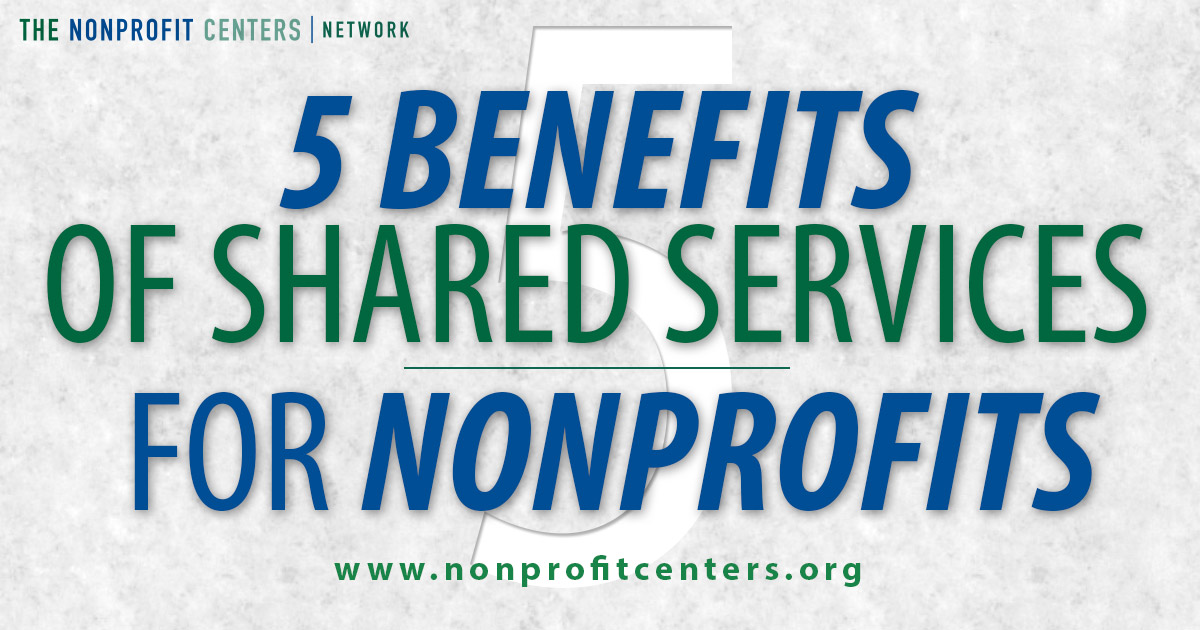What are Shared Services?
NCN helps nonprofit organizations share many kinds of organizational infrastructure – not just space. You may see or hear us talk about “shared services” from time to time. We define shared services broadly as the collaborative use of resources across traditional organizational boundaries. Multiple organizations, or multiple programs within a larger organization, establish shared services to collaboratively and more efficiently make use of equipment, staff, program resources, and much more.
Most nonprofit organizations have a traditional organizational model with their own core operations such as purchasing, public relations, human resources, IT support, equipment, and workspace. Financial pressures drive nonprofit organizations to look for new, cost-effective structures. Shared services offer a long-term solution by allocating much-needed resources to multiple organizations for a fee. Virtually any resource that does not uniquely fulfill an organization’s mission has the potential to be shared, including, but not limited to, things like busses, IT, software, reception, purchasing services, payroll, HR, volunteer management, and client intake.
Why should my organization consider shared services? There are five key benefits:
Purchasing Power
By purchasing services collectively, organizations can take advantage economies of scale. Organizations build their purchasing power by lowering per unit prices and generating savings typically available only to large institutions.
Efficiency
Through shared services, organizations decrease the expense of redundant services and increase investment in program-related activities to fulfill their missions. Shared services can also standardize processes across organizations for faster service.
Quality Resources
Shared services allow nonprofit organizations to access specialized expertise, improved services, and new technologies that could otherwise be unaffordable or unavailable.
Employee Retention
Shared services can offer the opportunity for both skilled technical staff and program staff to focus on their core competencies, creating higher job satisfaction. With staff resources focused on their specialties, organizations can realize better quality control and reduce their overall risk.
Stability and Investment
When mission-based nonprofit organizations create shared services programs, they are creating long-term systems to keep the associated resources, expertise, and financial exchange in the nonprofit sector. Shared services can also provide built-in back up, reducing the risk of losing institutional knowledge and practice when an individual staff person leaves, and creating overlapping service teams.
If you’re interested in learning more about Shared Services, please check out our publications page to purchase a copy of Shared Services: A Guide to Collaborative Solutions for Nonprofits.


It makes a lot of sense that shared service can decrease expenses for redundant services. This would be especially important if you are in nonprofit support services and need all the money you have available to you to help those that come to you for help. Saving money will allow you to help more people and help them more efficiently which would be really critical if you have many individuals under your care.